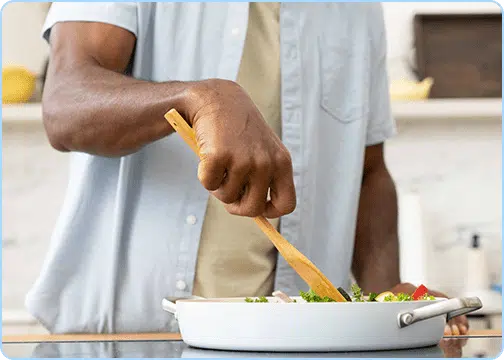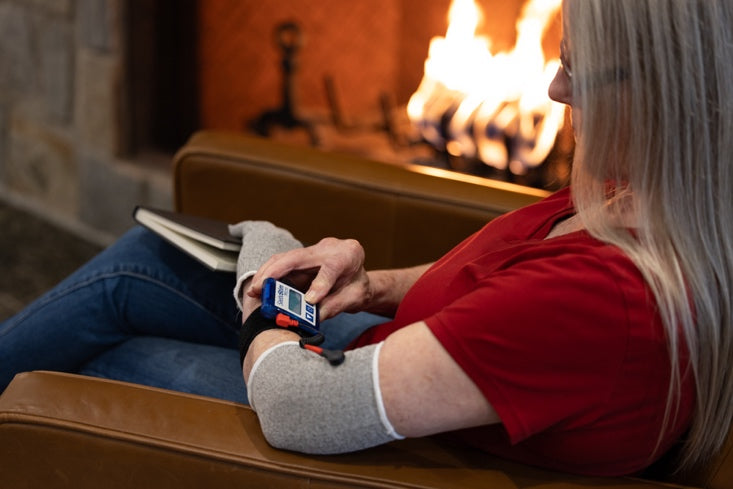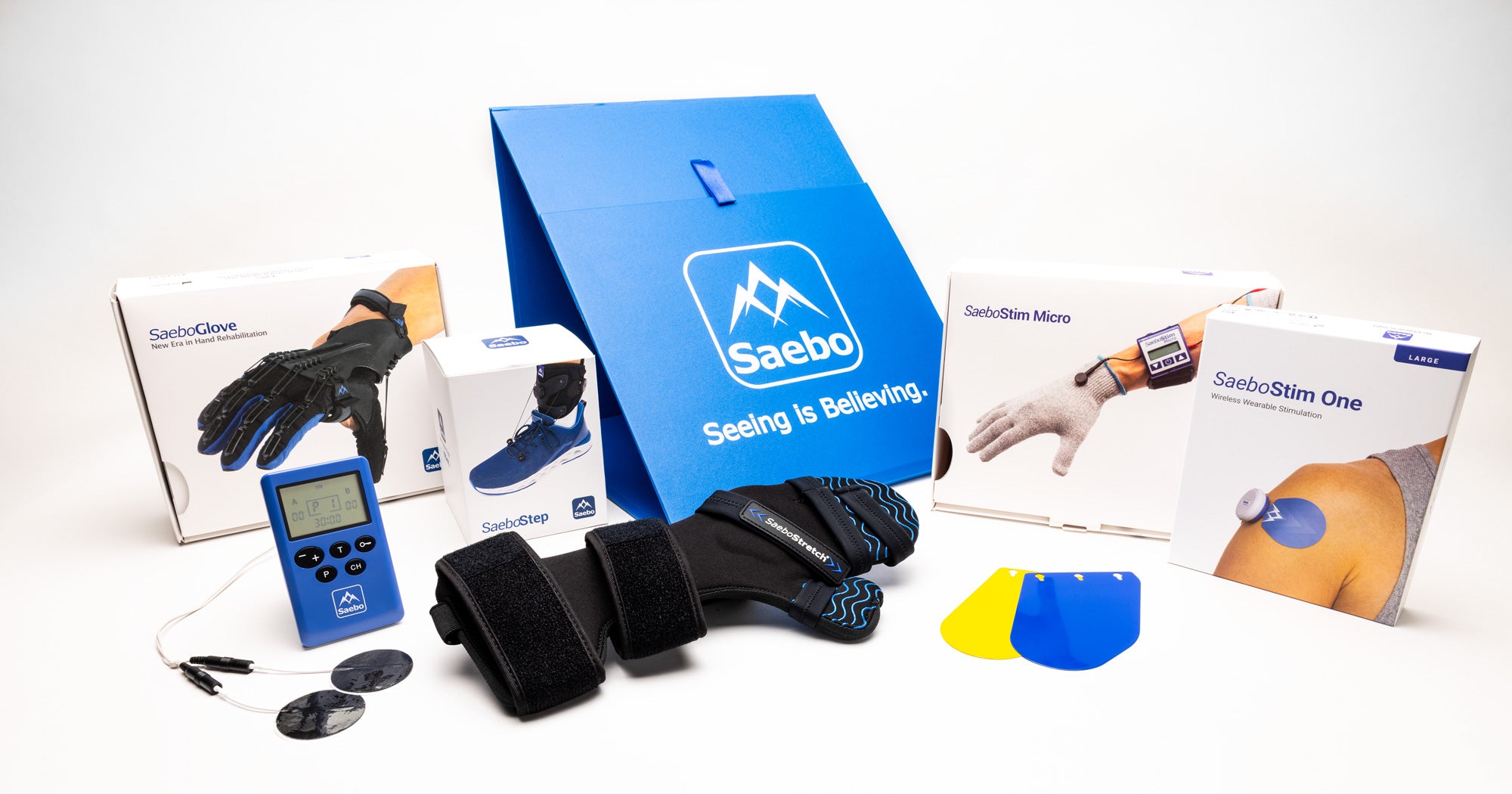Hand vs Arm Rehab: How to Tailor Recovery for Better Results

Hand vs Arm Rehab: How to Tailor Recovery for Better Results
Traditional one-size-fits-all treatments for the upper extremity rarely produce the best outcomes. Due to the complexities of neurologic recovery, stroke survivors need intentional hand and arm rehabilitation strategies for different stages.
Research shows as many as 80% of stroke survivors deal with upper limb weakness [1]. Most therapy approaches treat the entire limb as one unit neglecting to consider the unique needs of individual aspects. Many stroke treatments don't recognize the difference between these connected body parts. A patient's arm restoration success depends on understanding this vital difference.
This piece breaks down customized treatment methods and the most effective exercises for each area of upper extremity stroke rehabilitation. You'll learn when to focus on hand exercises versus broader arm function. Clear guidelines will help you begin rehabilitation based on your symptoms and limitations to maximize neuroplasticity-based therapy.
The difference between hand and arm recovery strategies matters greatly. Stroke survivors, caregivers, and therapists can create better plans and achieve improved outcomes with this knowledge.
Hand vs Arm: What Makes Their Recovery Paths Unique
The main difference between hand and upper extremity recovery stems from their unique anatomical structures and functions. A clear understanding of these differences helps create better rehabilitation strategies.
Functional roles of the hand and arm
The human hand performs complex functions with its 27 bones and 34 intrinsic muscles designed for precision movements. Our hands serve as the main tools to manipulate objects and help us perform daily activities from buttoning shirts to using utensils. The arm works as a positioning system with its three main bones (humerus, radius, ulna) and over 20 muscles that focus on strength, reach, and stability. These anatomical differences explain why arm physical therapy must address different motor challenges than hand rehabilitation, including differentiating between gross and fine motor control.
Why therapy goals differ
Therapy goals vary based on functional needs. Arm programs target proximal strength, range of motion, and gross motor control needed for lifting and reaching. Hand programs focuses on fine motor skills, dexterity, and coordination required for manipulation tasks. This difference matters because studies show hand strength substantially affects simple daily activities, while finger precision influences more complex instrumental activities [2]. Research also confirms that therapy approaches need different tailoring for acute versus chronic stages, as well as for severe versus mild-to-moderate impairment [3].
How stroke affects each differently
Stroke presents unique recovery challenges for each area. Hemiparesis or hemiplegia often affects hand and wrist function more severely than shoulder and elbow movement. This happens because hand function relies heavily on the corticospinal tract, which often gets damaged during CVA. Arm movement can use compensatory neural pathways that connect to proximal muscles better than distal ones. This neural organization shows why 50% or more of survivors face persistent upper limb problems long-term, and why in many cases hand recovery can progresses more slowly than arm recovery [4].
Where to Start: Recovery Decision Tree
- Severe weakness throughout? → Start with arm rehabilitation to build proximal stability
- Some arm movement but minimal hand function? → Build arm function while maintaining hand positioning
- Functional arm but limited hand dexterity? → Focus on hand therapy while strengthening arm
- Both functioning but impaired? → Use integrated approach for specific functional goals
Choosing the Right Therapy Based on Function
Stroke restoration should always be tailored to both your current abilities and your personal goals. The right approach evolves over time and is adjusted based on the skills and abilities of the individual.
What to prioritize and when
Several factors should guide your choice between hand-focused and arm-focused therapy. Considering the interconnectedness of the hand and arm, it is essential to always engage in activities for both. Depending on functional skills and goals, you may choose to prioritize one area or the other.
In these situations, making the hand the primary focus is typically recommended when:
- You have stable arm movement but struggle with hand control
- Your main goals involve fine motor skills (eating, dressing, using technology such as a cell phone)
- You can already do some simple reaching movements but cannot functionally manipulate objects
In these situations, making the arm the primary focus is typically recommended when:
- You have very limited or no shoulder/elbow movement, making reaching difficult
- Your posture and trunk stability are weak, limiting controlled arm use
- Your goals involve gross motor tasks (lifting, carrying, reaching overhead, supporting body weight)
- You cannot yet move the arm against gravity in daily activities
Therapy interventions for daily tasks after stroke
The foundation of effective rehabilitation come from practicing specific tasks. To maximize motivation and benefit, focusing on actual movements you need rather than isolated exercises is recommended. Here are some examples:
- Stroke hand exercises can focus on container handling, page turning, clothing fasteners, and device usage
- Arm-focused CVA exercises help you reach, lift, and position your arm for functional tasks
Therapy can help turn these movements into everyday activities.
Combining therapies for better outcomes
Research shows that mixing different approaches gives better results. One study found patients improved by a lot more when they moved both arms while getting electrical stimulation on the affected side, compared to single-therapy approaches [5].
Here are more combination therapies that work:
- Task practice with functional electrical stimulation
- Functional reaching with object grasp & release
- Constraint-Induced Movement Therapy (CIMT) + Functional Task Practice
- Aerobic/Endurance Exercise + Upper Limb Training
The secret lies in customization—your therapy should change as you improve. You might start with arm exercises to build stability, then move to hand therapy as your arm control gets better. Your functional goals should always drive these treatment decisions.
Building a Personalized Home Program
A tailored home improvement program is the lifeblood of successful stroke recovery. A major benefit of home-based programs is that they let you choose when and where to exercise while. Adding in restorative technology such as the SaeboStim Pro or One, mobile arm supports like the SaeboMAS, or finger extension supports like the Glove allow for further repetitive practice increasing the effectiveness.
How to regain use of arm after stroke at home
Daily practice and repetition are the foundations of home recovery. Research shows that regular practice triggers neuroplasticity—your brain's ability to rewire itself [6]. Need help identifying home rehab exercises? Here are some starting points:
- No hand/arm movement? → Begin with passive exercises using unaffected side to assist, work on positioning with tools like SaeboStretch to prevent any further worsening
- Minimal movement? → Add electrical stimulation + mental practice
- Some movement? → Focus on task-specific activities (reaching, grasping), add in supports like the SaeboMAS to further arm use
- Functional movement with weakness? → Progressive resistance training, use of SaeboGlove
At-home exercises post-stroke: daily routines
Simple exercises mixed into daily routines will give a steady practice schedule that won't overwhelm you. These activities work well:
- Card flipping to practice pinch and grasp
- Squeezing washcloths to build strength
- Manipulating grocery items to improve functional reach
- Watering plants with spray bottles for finger control
Tracking progress with simple tools
Exercise diaries are a simple but powerful tool for stroke improvement. Writing down your daily practice helps you stay consistent, track your progress, and notice patterns in what feels easier or harder over time. This record not only keeps you accountable but also gives therapists valuable insight into your real-world practice and healing.
Long-Term Recovery and Adjustments
Neurologic improvement patterns follow predictable paths unique to each survivor. These patterns can guide your rehabilitation experience and help maximize progress years after your original injury.
What to expect in chronic phase
Progress continues beyond 6 months, but often the level of progress slows down. Due to the incredible ability to develop new neural pathways, survivors can regain motor function throughout their lives after their stroke.
Adapting goals as function improves
Coordinated efforts between the patient, their family, and their can care team can aid continued progress through regular follow-ups with rehabilitation, re-alignment of goals, and adjustments to treatment plans based on current abilities. It is essential to ensure goals that are set are realistic to guide treatment appropriately and to prevent losing motivation. Goals that seem unachievable should be used to guide discussions about realistic outcomes, but then be broken down into smaller, manageable steps.
Preventing learned non-use and plateaus
The brain "forgets" how to use the affected side when CVA survivors rely too heavily on their unaffected limb. This lack of use, where we further the weakness or loss of function by neglecting to use the limb is referred to as learned non-use. Improvement after stroke doesn’t stop, but a period of slowed progression may highlight the need to make changes to our therapeutic plan.
Decision Tree for Overcoming Plateaus:
- Experiencing slowed progress? → Change exercise routine variety, alter the frequency of rehab or increase number of repetitions
- Learned non-use developing? → Consider CIMT (restricting unaffected limb)
- Motivation dropping? → Find accountability partner or use technology
Conclusion
Without a doubt, understanding the differences between hand-focused and arm-focused treatment can impact outcomes and how well you function daily. The hand's complex structure needs special approaches that focus on fine motor skills and dexterity. Arm rehabilitation, on the other hand, deals with strength, reach, and stability.
Your success depends on matching the approach to your specific needs and goals. The simple decision trees provided above can help you figure out whether to start with hand therapy, arm rehabilitation, or both together, although they are not exhaustive lists. The lifeblood of neuroplasticity and neurorehabilitation lies in consistency and lots of repetition.
Home-based programs play a crucial role in restoration. You can keep making progress outside formal therapy by adding simple exercises to your daily routine. Using assistive technologies like Saebo devices or other electrical stimulation tools can help too. On top of that, it helps to track your improvements, no matter how small. This gives you motivation and shows how far you've come on your recovery trip.
Recovery isn't a straight line. You'll hit periods of slowed progress, but they don't mean that healing has ended. They're chances to change your approach, do more repetitions, or try new exercises. The right strategies for your hand or arm needs will help you discover the full potential of your recovery and achieve better results in daily life.
References
- https://www.mdpi.com/2227-9032/12/14/1433
- https://pubmed.ncbi.nlm.nih.gov/27799695/
- https://pubmed.ncbi.nlm.nih.gov/21788265/
- https://pmc.ncbi.nlm.nih.gov/articles/PMC9911674/
- https://pubmed.ncbi.nlm.nih.gov/22275571/
- https://www.medlink.com/news/neuroplasticity-in-stroke-and-brain-injury-shaping-modern-rehabilitation-practices
Todo el contenido de este blog es únicamente informativo y no sustituye el consejo, diagnóstico ni tratamiento médico profesional. Consulte siempre con su médico u otro profesional de la salud cualificado si tiene alguna pregunta sobre una afección médica. Si cree que puede tener una emergencia médica, llame a su médico o al 911 de inmediato. Confiar en la información proporcionada por el sitio web de Saebo es bajo su propio riesgo.



